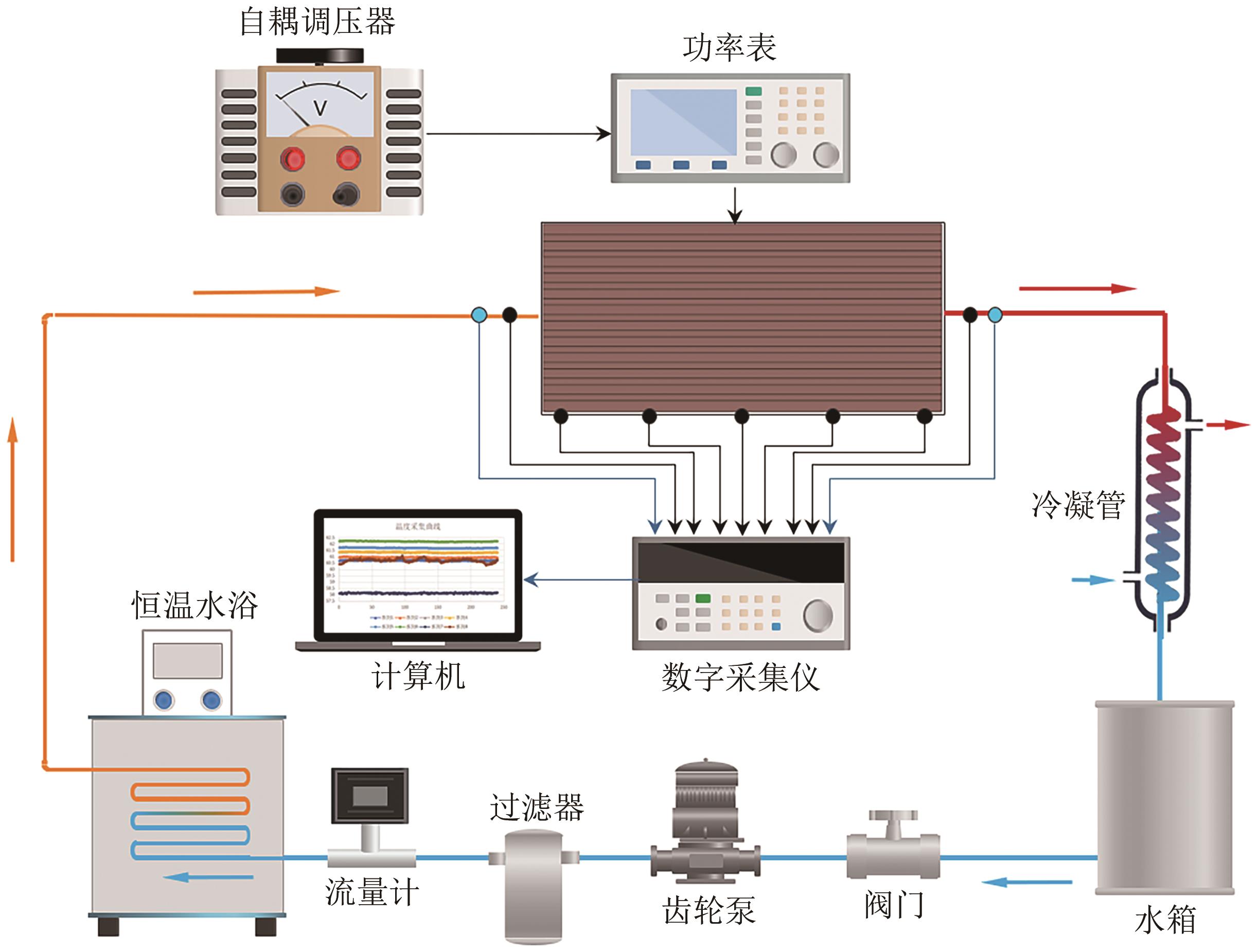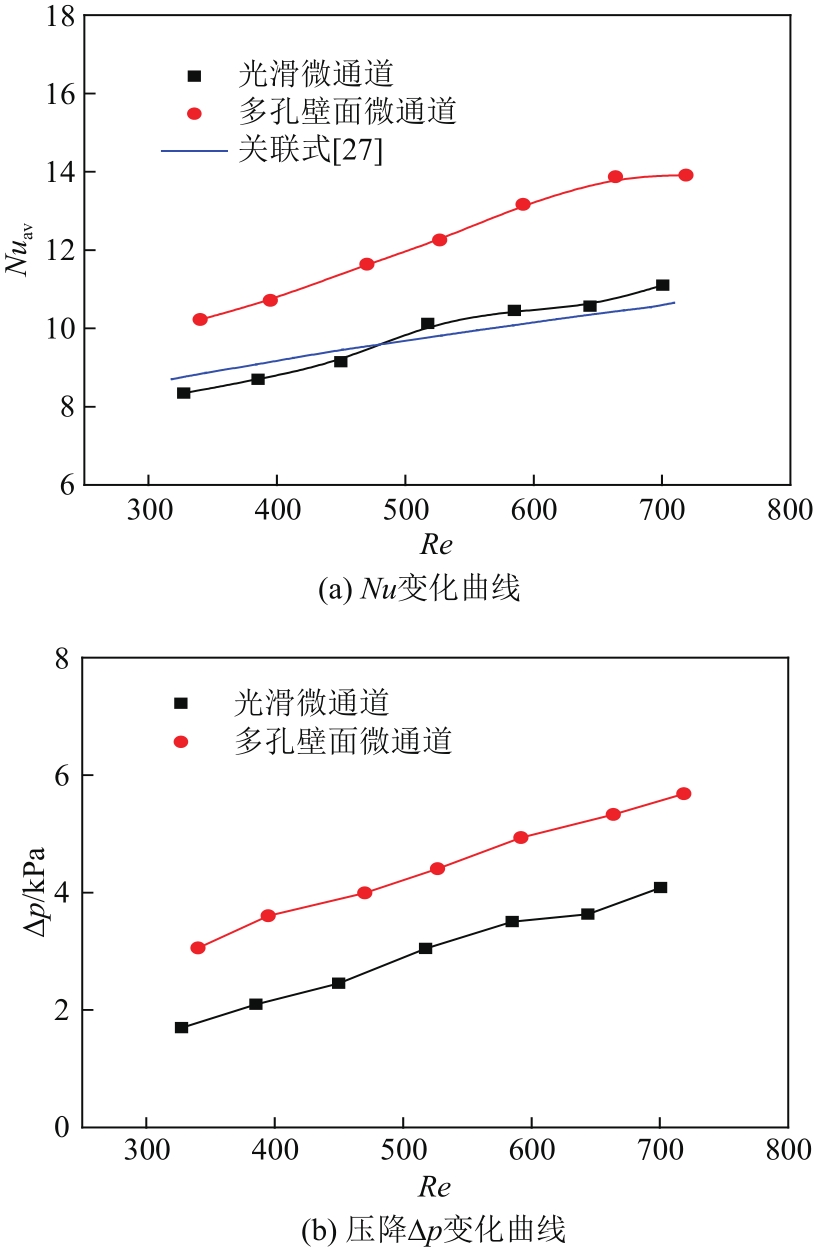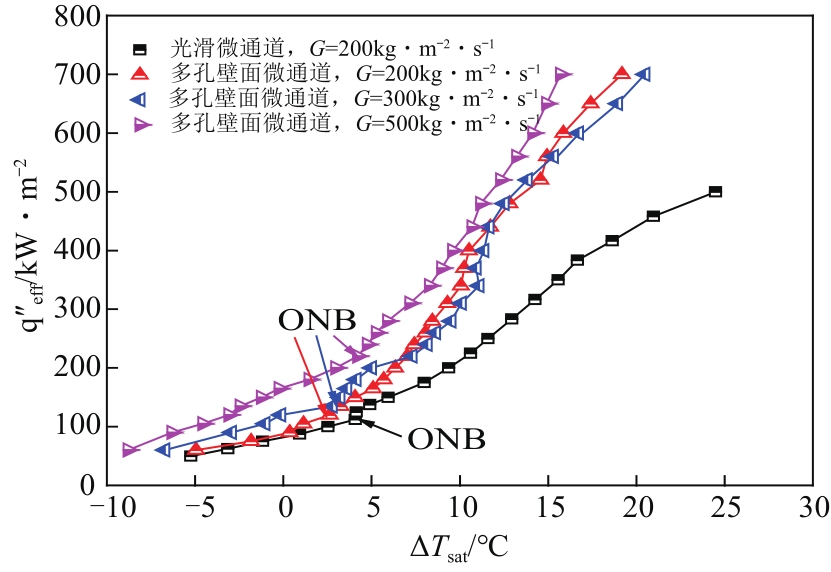| 1 |
TUCKERMAN D B, PEASE R F W. High-performance heat sinking for VLSI[J]. IEEE Electron Device Letters, 1981, 2(5): 126-129.
|
| 2 |
KINGSTON T A, WEIBEL J A, GARIMELLA S V. Ledinegg instability-induced temperature excursion between thermally isolated, heated parallel microchannels[J]. International Journal of Heat and Mass Transfer, 2019, 132: 550-556.
|
| 3 |
MOHAMMED ADHAM A, MOHD-GHAZALI N, AHMAD R. Thermal and hydrodynamic analysis of microchannel heat sinks: a review[J]. Renewable and Sustainable Energy Reviews, 2013, 21: 614-622.
|
| 4 |
陈然, 唐晟. 基于金字塔形扰动结构的双层梯形微通道热沉传热性能模拟[J]. 化工进展, 2020, 39(S2): 19-25.
|
|
CHEN Ran, TANG Sheng. Heat transfer performance simulation of double-layer trapezoidal microchannel heat sink based on pyramidal turbulence structure[J]. Chemical Industry and Engineering Progress, 2020, 39(S2): 19-25.
|
| 5 |
DENG Daxiang, ZENG Long, SUN Wei, et al. Experimental study of flow boiling performance of open-ring pin fin microchannels[J]. International Journal of Heat and Mass Transfer, 2021, 167: 120829.
|
| 6 |
DENG Daxiang, ZENG Long, SUN Wei. A review on flow boiling enhancement and fabrication of enhanced microchannels of microchannel heat sinks[J]. International Journal of Heat and Mass Transfer, 2021, 175: 121332.
|
| 7 |
李娟, 朱章钰, 翟昊, 等. 基于仿生学的强化传热与减阻技术研究进展[J]. 化工进展, 2021, 40(5): 2375-2388.
|
|
LI Juan, ZHU Zhangyu, ZHAI Hao, et al. Research progress on heat transfer enhancement and surface drag reduction techniques based on bionics[J]. Chemical Industry and Engineering Progress, 2021, 40(5): 2375-2388.
|
| 8 |
沈超群, 陈永平, 施明恒. 疏水微通道内流动冷凝流型实验研究[J]. 工程热物理学报, 2013, 34(1): 118-120.
|
|
SHEN Chaoqun, CHEN Yongping, SHI Mingheng. Experimental study of flow condensation pattern in hydrophobic microchannels[J]. Journal of Engineering Thermophysics, 2013, 34(1): 118-120.
|
| 9 |
SUJITH K C S, SURESH S, ANEESH C R, et al. Flow boiling heat transfer enhancement on copper surface using Fe doped Al2O3-TiO2 composite coatings[J]. Applied Surface Science, 2015, 334: 102-109.
|
| 10 |
SHEN B, HAMAZAKI T, MA W, et al. Enhanced pool boiling of ethanol on wettability-patterned surfaces[J]. Applied Thermal Engineering, 2019, 149: 325-331.
|
| 11 |
HE Bolin, LUO Xiaoping, YU Fan, et al. Flow boiling characteristics in bi-porous minichannel heat sink sintered with copper woven tape[J]. International Journal of Heat and Mass Transfer, 2020, 158: 119988.
|
| 12 |
ALAM T, LI W M, CHANG W, et al. A comparative study of flow boiling HFE-7100 in silicon nanowire and plainwall microchannels[J]. International Journal of Heat and Mass Transfer, 2018, 124: 829-840.
|
| 13 |
KHANIKAR V, MUDAWAR I, FISHER T. Effects of carbon nanotube coating on flow boiling in a micro-channel[J]. International Journal of Heat and Mass Transfer, 2009, 52(15/16): 3805-3817.
|
| 14 |
PIASECKA M. Heat transfer mechanism, pressure drop and flow patterns during FC-72 flow boiling in horizontal and vertical minichannels with enhanced walls[J]. International Journal of Heat and Mass Transfer, 2013, 66: 472-488.
|
| 15 |
WAN Wei, DENG Daxiang, HUANG Qingsong, et al. Experimental study and optimization of pin fin shapes in flow boiling of micro pin fin heat sinks[J]. Applied Thermal Engineering, 2017, 114: 436-449.
|
| 16 |
KANDLIKAR S G, KUAN W K, WILLISTEIN D A, et al. Stabilization of flow boiling in microchannels using pressure drop elements and fabricated nucleation sites[J]. Journal of Heat Transfer, 2006, 128(4): 389-396.
|
| 17 |
DENG Daxiang, WAN Wei, QIN Yu, et al. Flow boiling enhancement of structured microchannels with micro pin fins[J]. International Journal of Heat and Mass Transfer, 2017, 105: 338-349.
|
| 18 |
DENG Daxiang, CHEN Xiaolong, CHEN Liang, et al. Preparation of porous structures on copper microchannel surfaces by laser writing[J]. Science China Technological Sciences, 2019, 62(12): 2261-2270.
|
| 19 |
WANG G D, CHENG P, BERGLES A E. Effects of inlet/outlet configurations on flow boiling instability in parallel microchannels[J]. International Journal of Heat and Mass Transfer, 2008, 51(9/10): 2267-2281.
|
| 20 |
WAN Z M, JOSHI Y. Pressure drop and heat transfer characteristics of pin fin enhanced microgaps in single phase microfluidic cooling[J]. International Journal of Heat and Mass Transfer, 2017, 115: 115-126.
|
| 21 |
QU W L, SIU-HO A. Experimental study of saturated flow boiling heat transfer in an array of staggered micro-pin-fins[J]. International Journal of Heat and Mass Transfer, 2009, 52(7/8): 1853-1863.
|
| 22 |
HARIRCHIAN T, GARIMELLA S V. Microchannel size effects on local flow boiling heat transfer to a dielectric fluid[J]. International Journal of Heat and Mass Transfer, 2008, 51(15/16): 3724-3735.
|
| 23 |
LAW M, LEE P S, BALASUBRAMANIAN K. Experimental investigation of flow boiling heat transfer in novel oblique-finned microchannels[J]. International Journal of Heat and Mass Transfer, 2014, 76: 419-431.
|
| 24 |
PRAJAPATI Y K, PATHAK M, KHAN M K. A comparative study of flow boiling heat transfer in three different configurations of microchannels[J]. International Journal of Heat and Mass Transfer, 2015, 85: 711-722.
|
| 25 |
CHIEN L H, LIAO W R, GHALAMBAZ M, et al. Experimental study on convective boiling flow and heat transfer in a microgap enhanced with a staggered arrangement of nucleated micro-pin-fins[J]. International Journal of Heat and Mass Transfer, 2019, 144: 118653.
|
| 26 |
TAYLOR J R. An introduction to error analysis[M]. 2nd ed. USA: University Science Books, 1997.
|
| 27 |
LEE P S, GARIMELLA S V. Thermally developing flow and heat transfer in rectangular microchannels of different aspect ratios[J]. International Journal of Heat and Mass Transfer, 2006, 49(17/18): 3060-3067.
|
| 28 |
ZENG Long, DENG Daxiang, ZHONG Ningbo, et al. Thermal and flow performance in microchannel heat sink with open-ring pin fins[J]. International Journal of Mechanical Sciences, 2021, 200: 106445.
|
| 29 |
HETSRONI G, MOSYAK A, POGREBNYAK E, et al. Periodic boiling in parallel micro-channels at low vapor quality[J]. International Journal of Multiphase Flow, 2006, 32(10/11): 1141-1159.
|
| 30 |
DENG Daxiang, TANG Yong, HUANG Guanghan, et al. Characterization of capillary performance of composite wicks for two-phase heat transfer devices[J]. International Journal of Heat and Mass Transfer, 2013, 56(1/2): 283-293.
|
| 31 |
CORA Ö N, MIN D, KOÇ M, et al. Microscale-modulated porous coatings: Fabrication and pool-boiling heat transfer performance[J]. Journal of Micromechanics and Microengineering, 2010, 20(3): 035020.
|
| 32 |
HUANG Guanghan, LI Wenming, MA Jiaxuan, et al. High-frequency alternating nucleate boiling of water enabled by microslot arrays in microchannels[J]. International Journal of Heat and Mass Transfer, 2020, 150: 119271.
|
 ), SUN Jian, LIU Yongheng
), SUN Jian, LIU Yongheng








